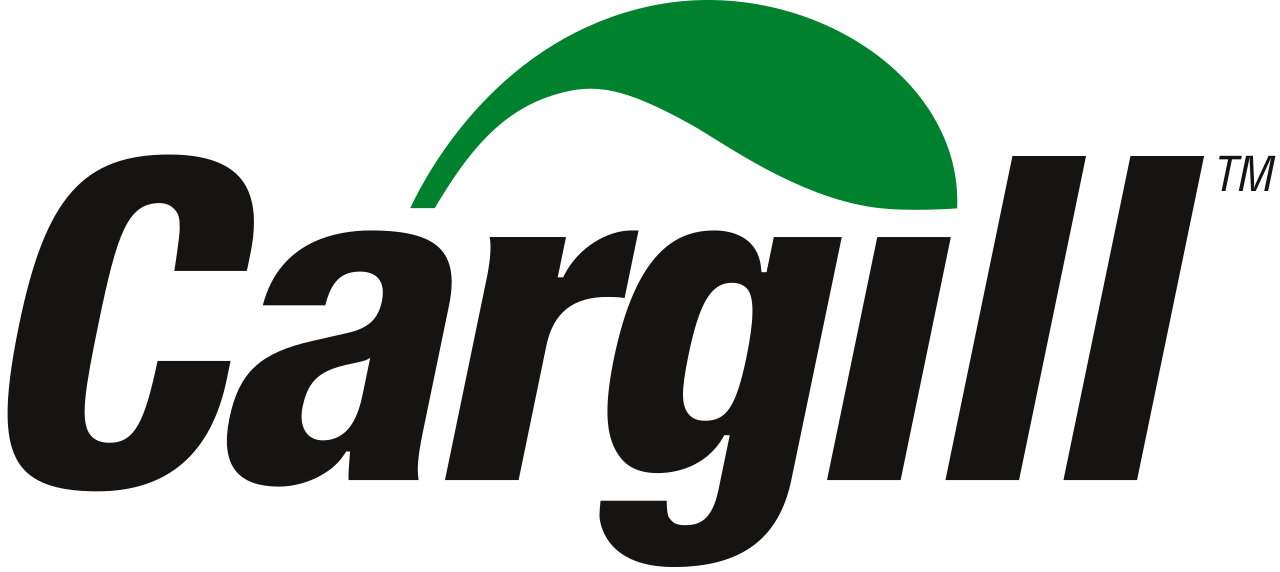Global Agricultural Pheromones Market, By Type, By Function, By Crop Type, By Mode of Action, By Region & Segmental Insights Trends and Forecast, 2024 – 2034
- Industry: Agriculture
- Report ID: TNR-110-1222
- Number of Pages: 420
- Table/Charts : Yes
- July, 2024
- Base Year : 2024
- No. of Companies : 10+
- No. of Countries : 29
- Views : 10109
- Covid Impact Covered: Yes
- War Impact Covered: Yes
- Formats : PDF, Excel, PPT
Agricultural pheromones are chemical substances used in farming to communicate between insects and other organisms. They play a significant role in pest management by manipulating the behaviour of pests and beneficial insects. The agricultural pheromones market is witnessing robust growth, driven by increasing demand for sustainable and environmentally friendly pest management solutions. Key growth drivers include rising awareness about the adverse effects of chemical pesticides on health and the environment, and stringent regulations promoting the adoption of biopesticides.
Technological advancements in pheromone synthesis and application methods are further propelling market expansion. Current trends indicate a surge in the adoption of integrated pest management (IPM) practices, with pheromone-based products gaining traction in both developed and developing regions. Additionally, the market is benefiting from innovations in pheromone dispensers and delivery systems, enhancing efficacy and cost-effectiveness. Strategic collaborations and investments in research and development are expected to further bolster market growth. In Terms of Revenue, the Global Agricultural Pheromones Market was Worth US$ 4.3 Bn in 2023, Anticipated to Witness CAGR of 18.3% During 2024 – 2034.

Trends in the Global Agricultural Pheromones Market
- Technological Advancements and Innovation: Improved synthesis techniques for pheromones have enhanced the purity and potency of these compounds, making them more effective in pest management. Innovations in pheromone delivery systems, such as controlled-release dispensers and microencapsulation, are increasing the efficiency and longevity of pheromone applications. For instance, in May 2022, BASF acquired Horta S.r.l., an Italian firm known for its expertise in digital farming solutions. Horta S.r.l. has developed advanced agronomic Decision Support Systems (DSS) tailored for various crops, including grapes, tomatoes, cereals, and olives. These advancements reduce the frequency of applications needed, thereby lowering costs for farmers. The development of pheromone-based products targeting a broader range of pests is expanding the market’s reach. With ongoing research and collaboration between agricultural scientists and technology companies, the market is poised for continued innovation, driving more sustainable and efficient farming practices globally.
- Integration with Sustainable Farming Practices: Farmers are increasingly adopting integrated pest management (IPM) strategies that utilize pheromones to reduce reliance on chemical pesticides. This integration helps in maintaining ecological balance, protecting beneficial insects, and preventing pest resistance. Additionally, consumer demand for organic and sustainably produced food is encouraging farmers to adopt pheromone-based pest control methods. Governments and agricultural organizations are also promoting pheromone use through subsidies and educational programs, further driving market growth. This trend aligns with broader environmental sustainability goals, supporting long-term agricultural productivity and ecosystem health.
Sex pheromones have captured a substantial share of the global agricultural pheromones market, driven by their efficacy in pest management and their role in integrated pest management (IPM) strategies. These pheromones are highly effective in disrupting the mating cycles of pests, thereby reducing their populations without the need for harmful chemical pesticides. The growing awareness of the environmental and health impacts of chemical pesticides has further accelerated the adoption of sex pheromones. Additionally, technological advancements in pheromone synthesis and application methods have enhanced their accessibility and cost-effectiveness for farmers. The specificity of sex pheromones in targeting particular pests also ensures minimal impact on beneficial insects, aligning with sustainable farming practices.
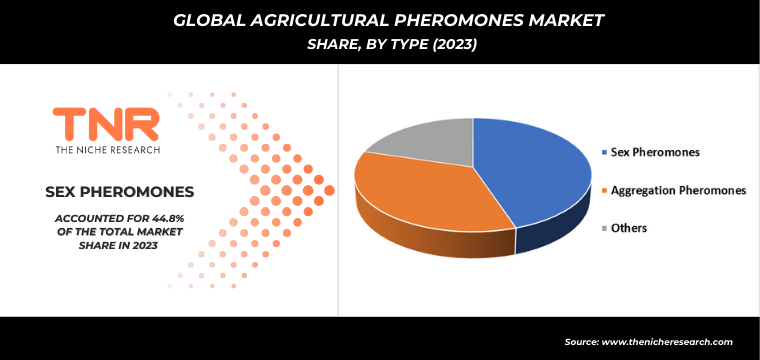
In 2023, detection & monitoring segment by function category has emerged as the second-largest leading segment in the global agricultural pheromones market. This growth is attributed to the increasing need for precise pest management strategies and early detection of pest infestations. Detection and monitoring pheromones are essential tools for farmers, enabling timely interventions and reducing crop damage. The segment’s expansion is further supported by advancements in pheromone trap technologies and integration with digital farming systems, enhancing the accuracy and efficiency of pest monitoring. This focus on proactive pest management aligns with the industry’s shift towards sustainable and data-driven agricultural practices.
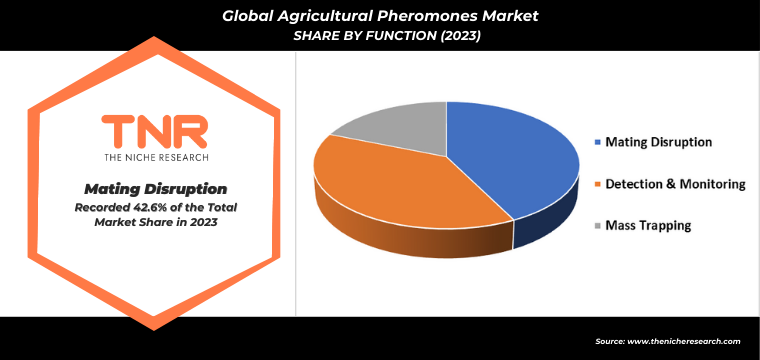
By crop type, orchard crops segment dominated the global Agricultural pheromones market and is expanding with a CAGR of 8.9% over the forecast timeline. This robust growth is driven by the high susceptibility of orchard crops, such as apples, pears, and citrus fruits, to pest infestations and the need for effective pest management solutions. The adoption of pheromone-based pest control in orchards enhances yield quality and quantity by reducing reliance on chemical pesticides. Additionally, the increasing consumer demand for organic and residue-free fruits is propelling the use of pheromones. Technological advancements in pheromone application methods and rising awareness among orchard growers are further fueling market expansion in this segment.
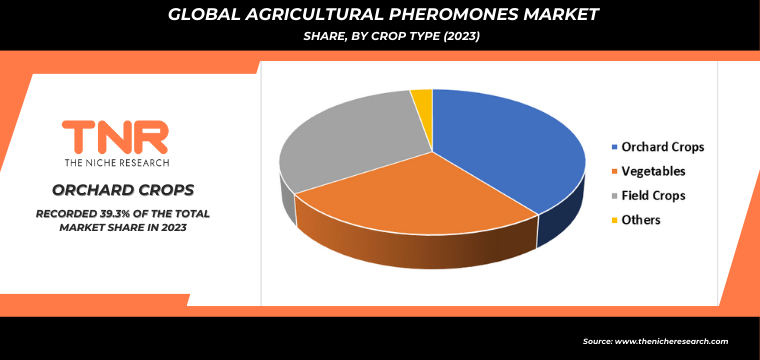
Traps segment by mode of action is set to be fastest growing segment in the global agricultural pheromones market with a revenue share of 20.5% in 2023. This growth is driven by the increasing demand for efficient and targeted pest control solutions. Pheromone traps are highly effective in monitoring and reducing pest populations by attracting and capturing pests, thereby minimizing crop damage and reducing the need for chemical pesticides. Innovations in trap designs and pheromone formulations, along with the growing emphasis on sustainable agriculture, are further accelerating the adoption of these traps. This trend reflects the shift towards integrated pest management practices.
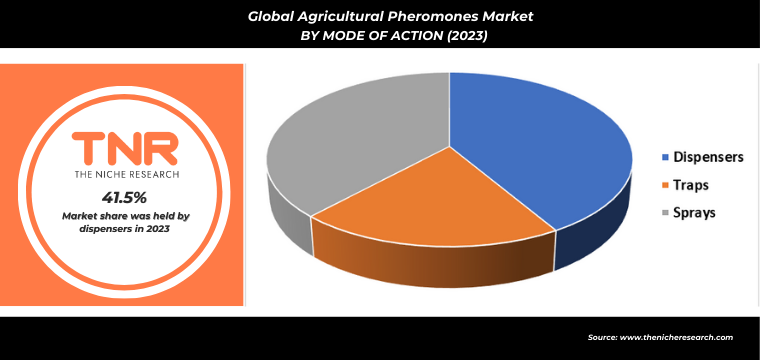
In 2023, Asia Pacific solidified its position as the third leading region in the agricultural pheromones market, driven by rapid agricultural development and increasing awareness of sustainable pest management practices. The region’s diverse agricultural landscape, including major crops like rice, fruits, and vegetables, fuels the demand for effective pest control solutions. Government initiatives promoting integrated pest management (IPM) and reducing chemical pesticide use further support market growth. Additionally, rising investments in agricultural technology and digital farming solutions are enhancing the adoption of pheromone-based products. The growing focus on improving crop yields and minimizing environmental impact aligns with the increasing use of pheromones in the region’s agriculture sector.
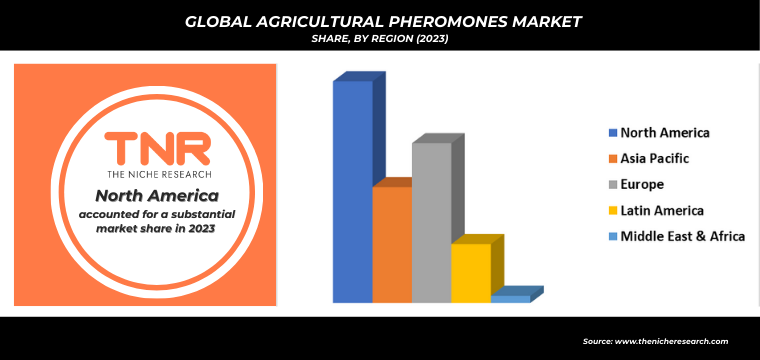
Competitive Landscape
Some of the players operating in the agricultural pheromones market are
- Biobest Group
- Isagro S.p.A.
- ISCA Global
- Koppert Biological Systems
- Pacific Biocontrol Corporation
- Provivi, Inc.
- Russell IPM
- SEDQ Healthy Crops SL
- Shin-Etsu Chemical Company
- Suterra LLC
- Other Industry Participants
Global Agricultural Pheromones Market Scope
| Report Specifications | Details |
| Market Revenue in 2023 | US$ 4.3 Bn |
| Market Size Forecast by 2034 | US$ 27.3 Bn |
| Growth Rate (CAGR) | 18.3% |
| Historic Data | 2016 – 2022 |
| Base Year for Estimation | 2023 |
| Forecast Period | 2024 – 2034 |
| Report Inclusions | Market Size & Estimates, Market Dynamics, Competitive Scenario, Trends, Growth Factors, Market Determinants, Key Investment Segmentation, Product/Service/Solutions Benchmarking |
| Segments Covered | By Type, By Function, By Crop Type, By Mode of Action, By Region |
| Regions Covered | North America, Europe, Asia Pacific, Middle East & Africa, Latin America |
| Countries Covered | U.S., Canada, Mexico, Rest of North America, France, The UK, Spain, Germany, Italy, Nordic Countries (Denmark, Finland, Iceland, Sweden, Norway), Benelux Union (Belgium, The Netherlands, Luxembourg), Rest of Europe, China, Japan, India, New Zealand, Australia, South Korea, Southeast Asia (Indonesia, Thailand, Malaysia, Singapore, Rest of Southeast Asia), Rest of Asia Pacific, Saudi Arabia, UAE, Egypt, Kuwait, South Africa, Rest of Middle East & Africa, Brazil, Argentina, Rest of Latin America |
| Key Players | Biobest Group, Isagro S.p.A., ISCA Global, Koppert Biological Systems, Pacific Biocontrol Corporation, Provivi, Inc., Russell IPM, SEDQ Healthy Crops SL, Shin-Etsu Chemical Company, Suterra LLC |
| Customization Scope | Customization allows for the inclusion/modification of content pertaining to geographical regions, countries, and specific market segments. |
| Pricing & Procurement Options | Explore purchase options tailored to your specific research requirements |
| Contact Details | Consult With Our Expert
Japan (Toll-Free): +81 663-386-8111 South Korea (Toll-Free): +82-808- 703-126 Saudi Arabia (Toll-Free): +966 800-850-1643 United Kingdom: +44 753-710-5080 United States: +1 302-232-5106 E-mail: askanexpert@thenicheresearch.com
|
Global Agricultural Pheromones Market
By Type
- Sex Pheromones
- Aggregation Pheromones
- Others
By Function
- Mating Disruption
- Detection & Monitoring
- Mass Trapping
By Crop Type
- Orchard Crops
- Vegetables
- Field Crops
- Others
By Mode of Action
- Dispensers
- Traps
- Sprays
By Region
- North America (U.S., Canada, Mexico, Rest of North America)
- Europe (France, The UK, Spain, Germany, Italy, Nordic Countries (Denmark, Finland, Iceland, Sweden, Norway), Benelux Union (Belgium, The Netherlands, Luxembourg), Rest of Europe)
- Asia Pacific (China, Japan, India, New Zealand, Australia, South Korea, Southeast Asia (Indonesia, Thailand, Malaysia, Singapore, Rest of Southeast Asia), Rest of Asia Pacific)
- Middle East & Africa (Saudi Arabia, UAE, Egypt, Kuwait, South Africa, Rest of Middle East & Africa)
- Latin America (Brazil, Argentina, Rest of Latin America)
Report Layout:
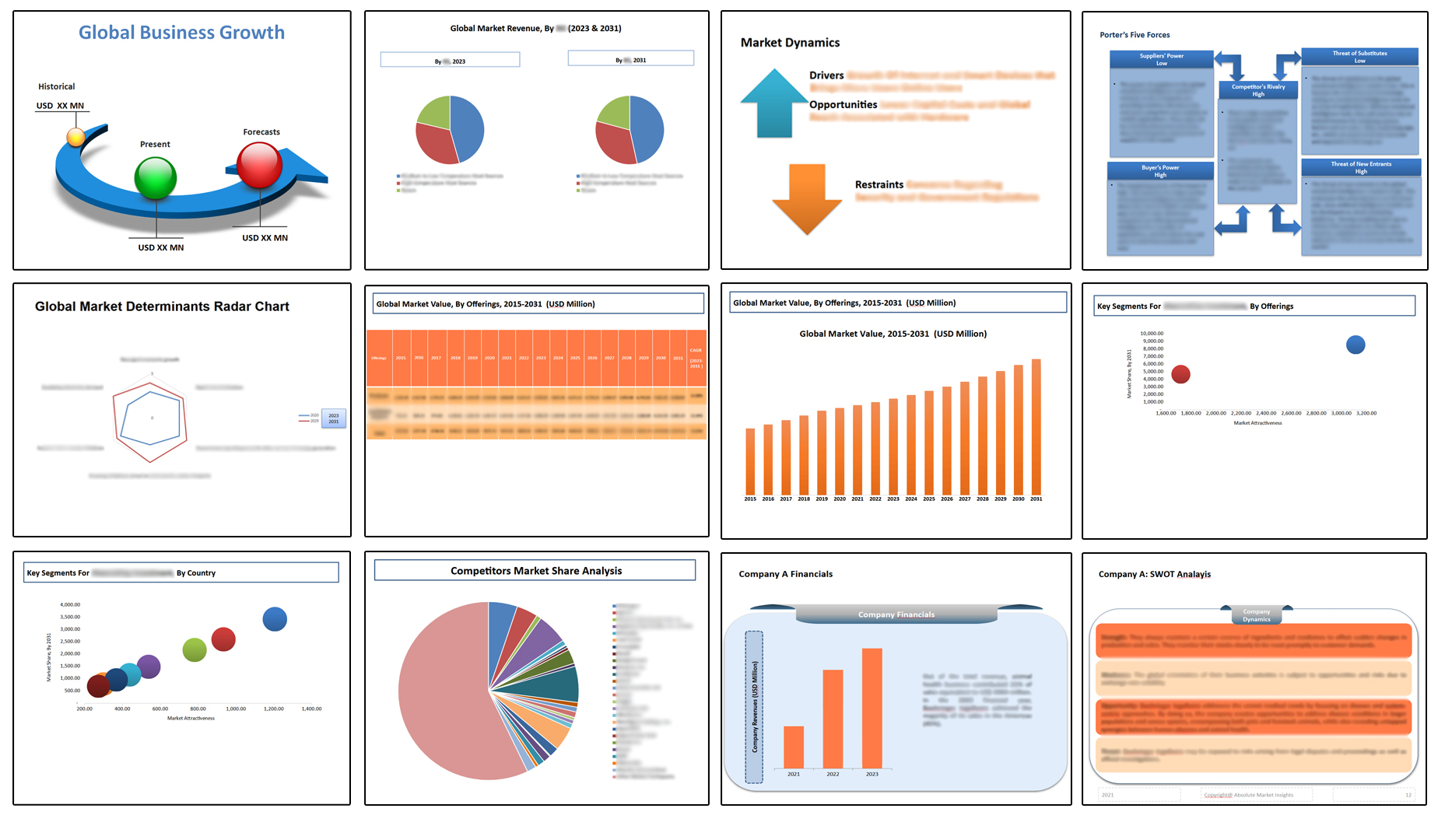
Table of Contents
Note: This ToC is tentative and can be changed according to the research study conducted during the course of report completion.
**Exclusive for Multi-User and Enterprise User.
Global Agricultural Pheromones Market
By Type
- Sex Pheromones
- Aggregation Pheromones
- Others
By Function
- Mating Disruption
- Detection & Monitoring
- Mass Trapping
By Crop Type
- Orchard Crops
- Vegetables
- Field Crops
- Others
By Mode of Action
- Dispensers
- Traps
- Sprays
By Region
- North America (U.S., Canada, Mexico, Rest of North America)
- Europe (France, The UK, Spain, Germany, Italy, Nordic Countries (Denmark, Finland, Iceland, Sweden, Norway), Benelux Union (Belgium, The Netherlands, Luxembourg), Rest of Europe)
- Asia Pacific (China, Japan, India, New Zealand, Australia, South Korea, Southeast Asia (Indonesia, Thailand, Malaysia, Singapore, Rest of Southeast Asia), Rest of Asia Pacific)
- Middle East & Africa (Saudi Arabia, UAE, Egypt, Kuwait, South Africa, Rest of Middle East & Africa)
- Latin America (Brazil, Argentina, Rest of Latin America)
The Niche Research approach encompasses both primary and secondary research methods to provide comprehensive insights. While primary research is the cornerstone of our studies, we also incorporate secondary research sources such as company annual reports, premium industry databases, press releases, industry journals, and white papers.
Within our primary research, we actively engage with various industry stakeholders, conducting paid interviews and surveys. Our meticulous analysis extends to every market participant in major countries, allowing us to thoroughly examine their portfolios, calculate market shares, and segment revenues.
Our data collection primarily focuses on individual countries within our research scope, enabling us to estimate regional market sizes. Typically, we employ a bottom-up approach, meticulously tracking trends in different countries. We analyze growth drivers, constraints, technological innovations, and opportunities for each country, ultimately arriving at regional figures.Our process begins by examining the growth prospects of each country. Building upon these insights, we project growth and trends for the entire region. Finally, we utilize our proprietary model to refine estimations and forecasts.
Our data validation standards are integral to ensuring the reliability and accuracy of our research findings. Here’s a breakdown of our data validation processes and the stakeholders we engage with during our primary research:
- Supply Side Analysis: We initiate a supply side analysis by directly contacting market participants, through telephonic interviews and questionnaires containing both open-ended and close-ended questions. We gather information on their portfolios, segment revenues, developments, and growth strategies.
- Demand Side Analysis: To gain insights into adoption trends and consumer preferences, we reach out to target customers and users (non-vendors). This information forms a vital part of the qualitative analysis section of our reports, covering market dynamics, adoption trends, consumer behavior, spending patterns, and other related aspects.
- Consultant Insights: We tap into the expertise of our partner consultants from around the world to obtain their unique viewpoints and perspectives. Their insights contribute to a well-rounded understanding of the markets under investigation.
- In-House Validation: To ensure data accuracy and reliability, we conduct cross-validation of data points and information through our in-house team of consultants and utilize advanced data modeling tools for thorough verification.
The forecasts we provide are based on a comprehensive assessment of various factors, including:
- Market Trends and Past Performance (Last Five Years): We accurately analyze market trends and performance data from preceding five years to identify historical patterns and understand the market’s evolution.
- Historical Performance and Growth of Market Participants: We assess the historical performance and growth trajectories of key market participants. This analysis provides insights into the competitive landscape and individual company strategies.
- Market Determinants Impact Analysis (Next Eight Years): We conduct a rigorous analysis of the factors that are projected to influence the market over the next eight years. This includes assessing both internal and external determinants that can shape market dynamics.
- Drivers and Challenges for the Forecast Period:Identify the factors expected to drive market growth during the forecast period, as well as the challenges that the industry may face. This analysis aids in deriving an accurate growth rate projection.
- New Acquisitions, Collaborations, or Partnerships: We keep a close watch on any new acquisitions, collaborations, or partnerships within the industry. These developments can have a significant impact on market dynamics and competitiveness.
- Macro and Micro Factors Analysis:A thorough examination of both macro-level factors (e.g., economic trends, regulatory changes) and micro-level factors (e.g., technological advancements, consumer preferences) that may influence the market during the forecast period.
- End-User Sentiment Analysis: To understand the market from the end-user perspective, we conduct sentiment analysis. This involves assessing the sentiment, preferences, and feedback of the end-users, which can provide valuable insights into market trends.
- Perspective of Primary Participants: Insights gathered directly from primary research participants play a crucial role in shaping our forecasts. Their perspectives and experiences provide valuable qualitative data.
- Year-on-Year Growth Trend: We utilize a year-on-year growth trend based on historical market growth and expected future trends. This helps in formulating our growth projections, aligning them with the market’s historical performance.
Research process adopted by TNR involves multiple stages, including data collection, validation, quality checks, and presentation. It’s crucial that the data and information we provide add value to your existing market understanding and expertise. We have also established partnerships with business consulting, research, and survey organizations across regions and globally to collaborate on regional analysis and data validation, ensuring the highest level of accuracy and reliability in our reports.
